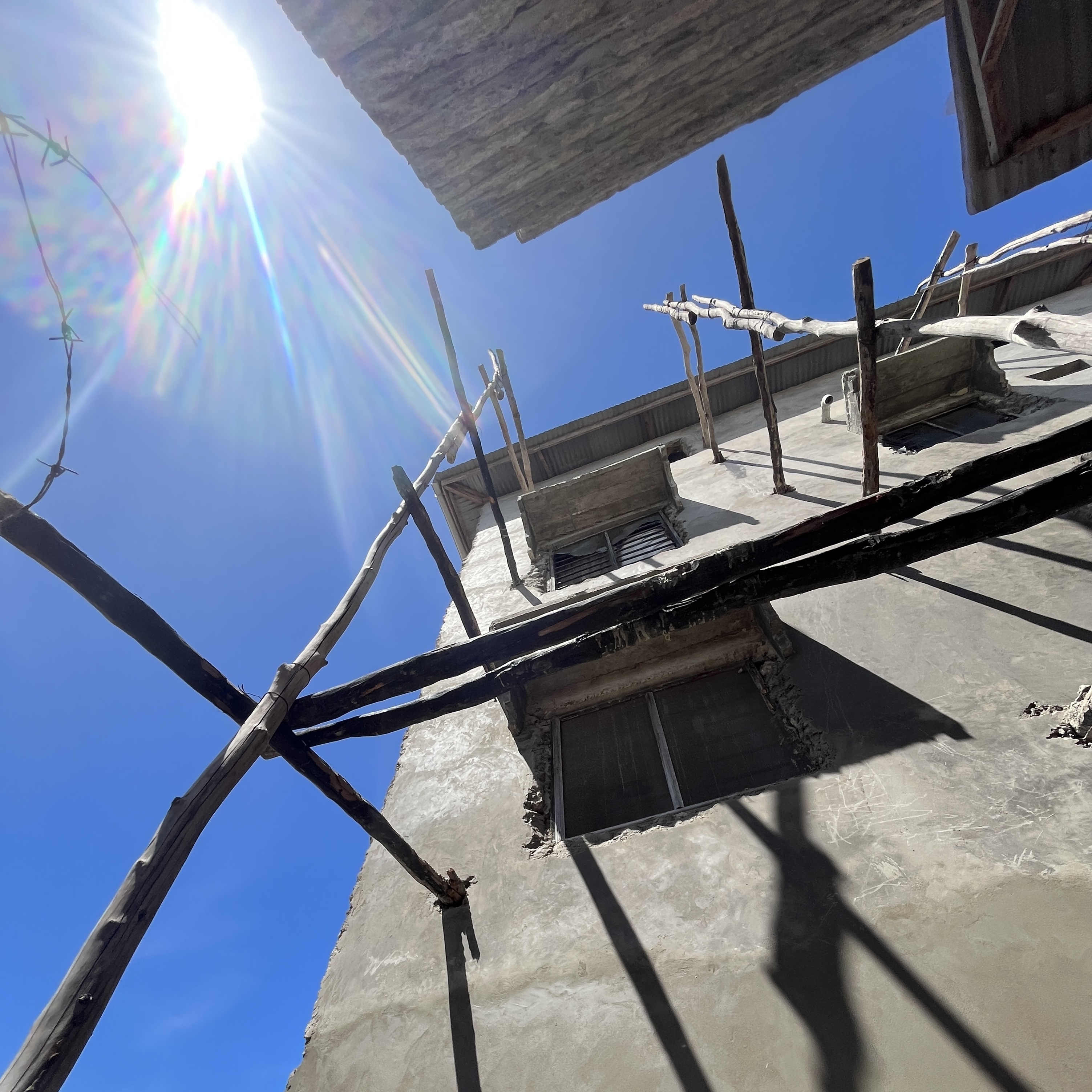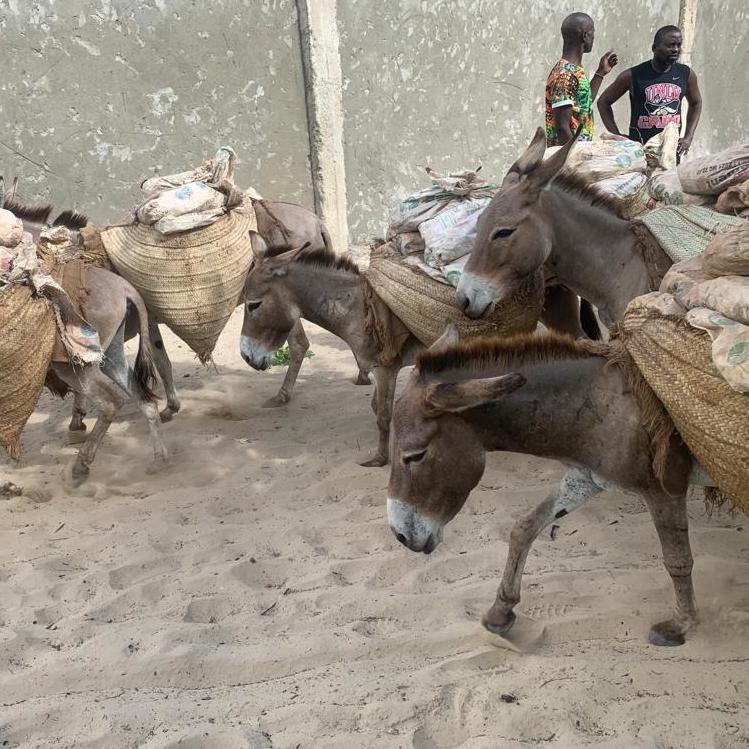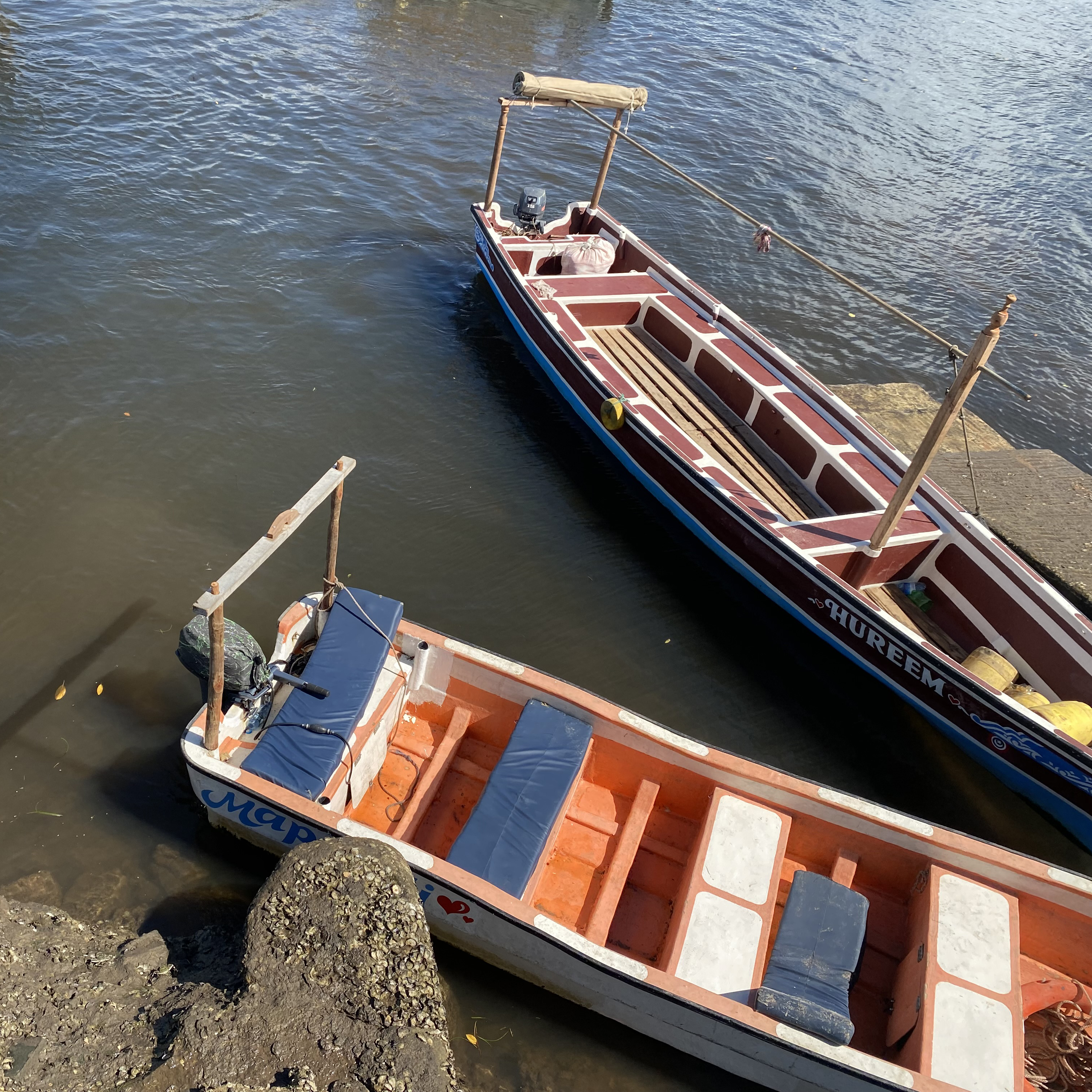Urban stories of Displacement
How are memories of displacement and hopes of return shared in Lamu? How do they impact political claims to address historical and ongoing injustices?
The streets and walls of Lamu town resonate with the collective memory of displacement—etched deeply in the community. Following the Shifta War, a secessionist conflict held in northeastern Kenya between 1963 and 1967, thousands of people who had to flee due to extreme violence found refuge and stability in Lamu. Neighbourhoods like Langoni and Gadeni emerged in part as a result of this influx, and have become living archives of the hopes and struggles of the displaced.
In the face of LAPSSET's promise of infrastructure-led development, these memories of displacement and forced resettlement are reactivated and reworked. This theme explores the urban afterlives of displacement by focusing on the memories and experiences of those affected by displacement.
Projects
Urban Stories of Displacement #2305
Nyumbani ni Nyumbani (Home is Home)
Short film
Authors
Amina Omar
Hajj Shee
Florence Alde
Isabella Pamplona
Amina Omar
Hajj Shee
Florence Alde
Isabella Pamplona
Lamu, 2023
Watch complete film
Watch complete film
Many internally displaced persons who fled the mainland during the Shifta War live in Lamu town, particularly in the urban areas of Gadeni and Langoni. This project shows how displaced communities grapple with belonging and with political claims to historical redress.
"Nymbani ni Nymbani" is based on a series of life story interviews and urban walks with IDPs and their family members of different generations who currently reside in Lamu.
The film gives voice to these families and community leaders at the forefront of political struggles for reparations and portrays how they contributed to make Lamu what it is today.
_
Produced by:
Isabella Pamplona, Florence Alder, Amina Omar and Hajj She.
Featuring:
Mohammed Mbwana, Ahmed Kihobe, Hassan Awadh, Esha Adi, Esha Adi's aunt, Mwana Amina Amin, Mohamed Ali and Omar Shamina.
Language:
English and Kiswahili
"Nymbani ni Nymbani" is based on a series of life story interviews and urban walks with IDPs and their family members of different generations who currently reside in Lamu.
The film gives voice to these families and community leaders at the forefront of political struggles for reparations and portrays how they contributed to make Lamu what it is today.
_
Produced by:
Isabella Pamplona, Florence Alder, Amina Omar and Hajj She.
Featuring:
Mohammed Mbwana, Ahmed Kihobe, Hassan Awadh, Esha Adi, Esha Adi's aunt, Mwana Amina Amin, Mohamed Ali and Omar Shamina.
Language:
English and Kiswahili
Urban stories of Displacement #2306
Displacement and Belonging in Lamu's Archipelago
Where is home?
Displacement and Belonging in Lamu's Archipelago
“We cannot leave this place here... But we would be happy to go back there.”
This quote, by a Lamu resident who identifies as an IDP, captures the complex feelings experienced by the displaced community in Lamu after their displacement from the mainland during the Shifta War. The disappointments of Kenya's post-colonial politics have left them in a kind of limbo where they do not feel full belonging to their ancestral homeland nor fully to Lamu, the place where they currently live.
“Their attachment to Lamu is intertwined with a longing for a different, parallel reality they claim as their home. In claiming to belong to their homeland, ethnicity becomes a political tool through which they exercise agency and negotiate compensation for the historical injustices suffered during the Shifta War.”
This paper investigates the nuanced sense of belonging among Lamu's IDPs in the context of urban archipelagic life. It explores how their feelings are shaped by the complex interplay between postcolonial politics, the particularities of archipelagic life, and the traumas of displacement. In doing so, it traces their relationship with land, sea, livelihoods, community, and their influence on the urban fabric. Furthermore, it shows how displacement and dissatisfaction with postcolonial Kenya inform the mobilizing of ethnicity as a political tool in seeking reparations.
Mainland ancestries
In numerous ways, IDPs and their descendants establish a sense of rootedness in their ancestral homeland. This encompasses their past lives on the mainland, emphasising the significance of agriculture, fishing, trade, and a close-knit community. It also includes the enduring connections to Lamu's land and coastal waters.
The archipelagic way of life, marked by continual movement and fluidity, shapes their perceptions of space, time, and belonging.
Settling into Lamu
Recent scholarly discussions of migration encompass broader socio-political, political-economic, and cultural processes, seeing the geopolitical dynamics of global capitalism as the ultimate cause of forced displacement. These perspectives challenge the idea that migration is purely voluntary or involuntary, considering the interplay between the factors influencing it. Within this context, the settlement of IDPs in Lamu appears as a complex process, influenced by the interplay of available possibilities and the socio-political and economic factors present.
IDPs belong to Lamu in many different ways. This is evident in their adaptive livelihood strategies, integration into the island's socioeconomic fabric, intermarriage with local communities, formation of new community organisations, and their significant impact on shaping the urban landscape. However, their connection to Lamu is not without complexity or ambiguity.
In Lamu island, the two areas generally known for hosting IDPs and "immigrants" are the Langoni and Gadeni neighbourhoods. These areas experienced significant growth during the early twentieth century, in part because of the influx of Indians. With Kenyan independence, many Indians left the island, leaving many properties unoccupied. As families and individuals displaced during the war sought refuge in Lamu, locals offered them access to housing in these neighborhoods.
The Gadeni area, which used to be located on the outskirts of the Old Town, held small farming plots with fruits and vegetables, from where Lamu locals sold their produce both in the local market and to the Middle East. This dynamic of urban farming gave the neighbourhood its name of Gadeni, which comes from "garden.” Since the area was not densely built-up back then, IDPs were given the opportunity to lease the land in the neighbourhood.
IDPs belong to Lamu in many different ways. This is evident in their adaptive livelihood strategies, integration into the island's socioeconomic fabric, intermarriage with local communities, formation of new community organisations, and their significant impact on shaping the urban landscape. However, their connection to Lamu is not without complexity or ambiguity.
IDPs continue to yearn for an imagined home, which is manifested in a sense of detachment from the local community, dedicated efforts to preserve cultural traditions, the perception of being guests in Lamu, and engagement in political activism to return to their homeland.
In Lamu island, the two areas generally known for hosting IDPs and "immigrants" are the Langoni and Gadeni neighbourhoods. These areas experienced significant growth during the early twentieth century, in part because of the influx of Indians. With Kenyan independence, many Indians left the island, leaving many properties unoccupied. As families and individuals displaced during the war sought refuge in Lamu, locals offered them access to housing in these neighborhoods.
The Gadeni area, which used to be located on the outskirts of the Old Town, held small farming plots with fruits and vegetables, from where Lamu locals sold their produce both in the local market and to the Middle East. This dynamic of urban farming gave the neighbourhood its name of Gadeni, which comes from "garden.” Since the area was not densely built-up back then, IDPs were given the opportunity to lease the land in the neighbourhood.
“They were given settlement there because they couldn't afford to rent or buy houses in town, so they got them in monthly or annual leases...”
(Kihobe, A. 2023)Settling in Gadeni gave the IDP community the opportunity to start building new lives in Lamu. Our interlocutor Ahmed Kihobe further explained that this provided a sense of security and peace for the displaced individuals, as the islands were considered safe compared to the mainland. There, they found the possibility to participate in the social life of the town. The provision of settlement and opportunities in Lamu brought a bigger influx of IDPs to the area and facilitated the reunion of dispersed families and communities. As they started to feel at ease with the possibilities in their new environment, many of the IDPs contacted others in Pate, Mtangawanga, and Shanga with the aim of bringing their relatives together again.
Settling in Lamu implied a tradeoff for IDPs in many aspects. As previously mentioned, one of the factors that weighed in when deciding to settle on the island was the possibility of access to education for future generations. In the case of Hassan, while he was only able to secure a source of income with prospects in Takwa, having access to education for his children was an essential factor that contributed to his settling and deciding to build his home in Lamu.
In the past years, being able to access education has allowed the younger generation to secure employment opportunities outside of Lamu, especially in the Middle East. Many individuals, including most of Ahmed's classmates and friends, decided to leave Lamu in pursuit of the opportunity for a better life. Ahmed highlighted that some of these friends have been absent from Lamu for almost four decades. Yet, while choosing to stay away, they still provide financial support to their families, "they will send remittance money to help their family, but they don't want to come back again.” Something worth mentioning is the contrasting situation between the children and grandchildren of IDPs. While wishing to move away, the older generation chooses to keep building and investing in the island, which starkly contrasts with many of their children, who have left young and have no intention of returning to Lamu.
The daily struggle
When walking around Lamu, one of the first things we asked was, “Where are all of the IDPs?”. To our surprise, we were told that most of them were at the main square, exactly where we were standing at that precise moment. Most of the individuals, mostly older men, sitting in this public area were IDPs waiting for any small job opportunity. Interestingly, by not actively working in the middle of a weekday, the common commentary was that they were idle. Yet, this scene reminisces older ways of engaging with the city in Lamu:
“Until about 50 years ago, sitting on one of Lamu’s baraza while sipping Arabic coffee formed the epitome of urban flair. Now it is depicted either as an outdated practice by local youth or as an example of Swahili ‘laziness’ by mainland Kenyans.”
(Hillewaert, Sarah. 2017)This everyday waiting at the main square in Lamu, while they are looking for ways of earning at least 200 KSH to make it through the day, is just one example of the many ways in which IDPs demonstrate a nuanced sense of belonging within the city. Despite their challenging circumstances, IDPs actively navigate their identities and connections to the urban space, finding ways to establish a sense of belonging. While some people actively look for new livelihoods, like walking tourists around or selling tobacco, others are still trying to preserve their traditional livelihoods.
Imaginaries of Home
IDPs construct an imaginary of home based not only on longings for a better life, but also on ancestral narratives, which are passed on through generations. Their sense of belonging is thus in tension between attachment to and detachment from Lamu, with all its aspirations and frustrations. Ethnicity in this context is mobilized as a political tool to demand rights to land and resources and to express dissatisfaction with postcolonial Kenya's politics.
The research indicates that the IDPs strive for inclusion in the local economy and society and aim to overcome their urban marginalization. Their attachment to Lamu is multifaceted, encompassing a connection to the city and the community, a longing for their imagined home, and a desire for justice.











